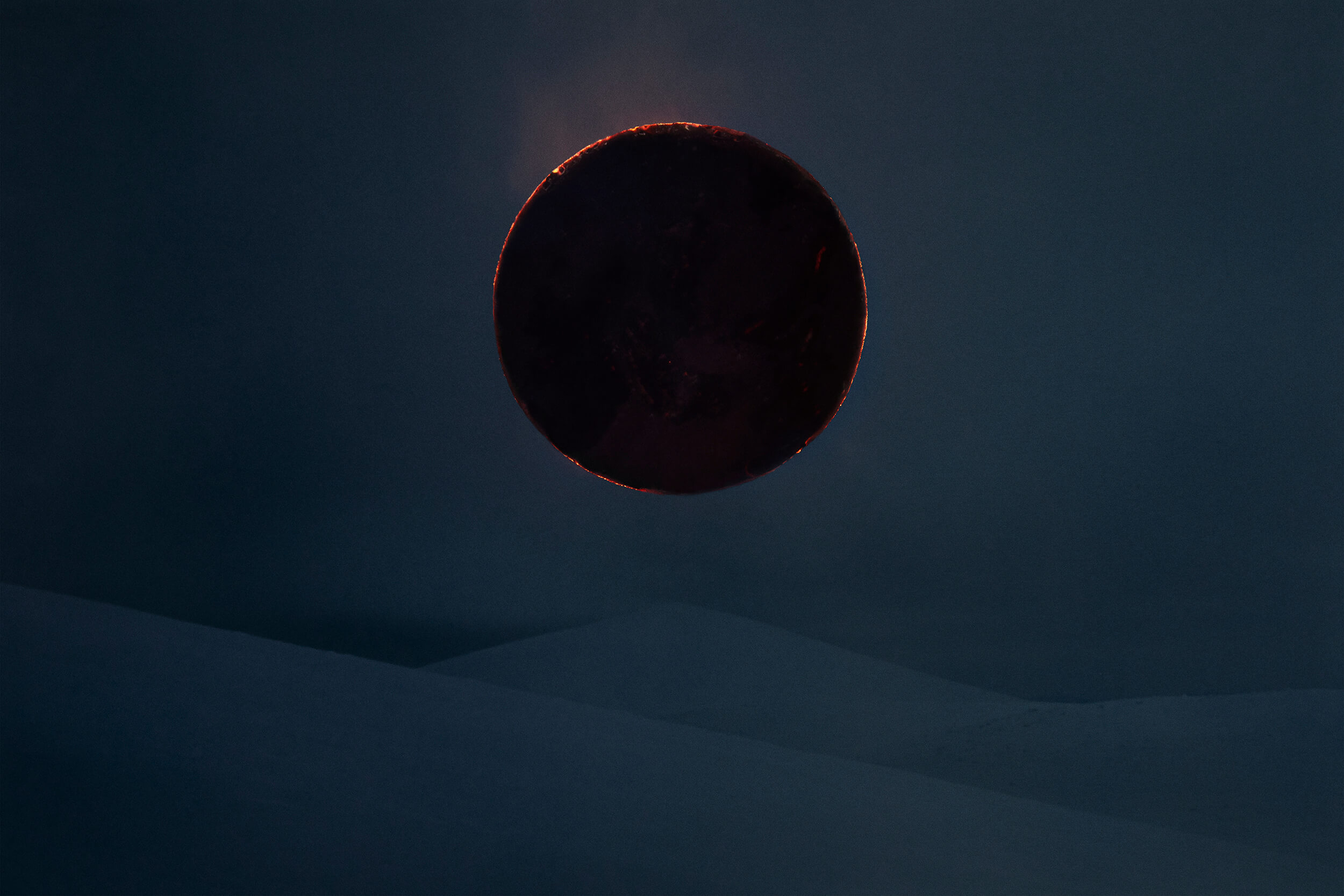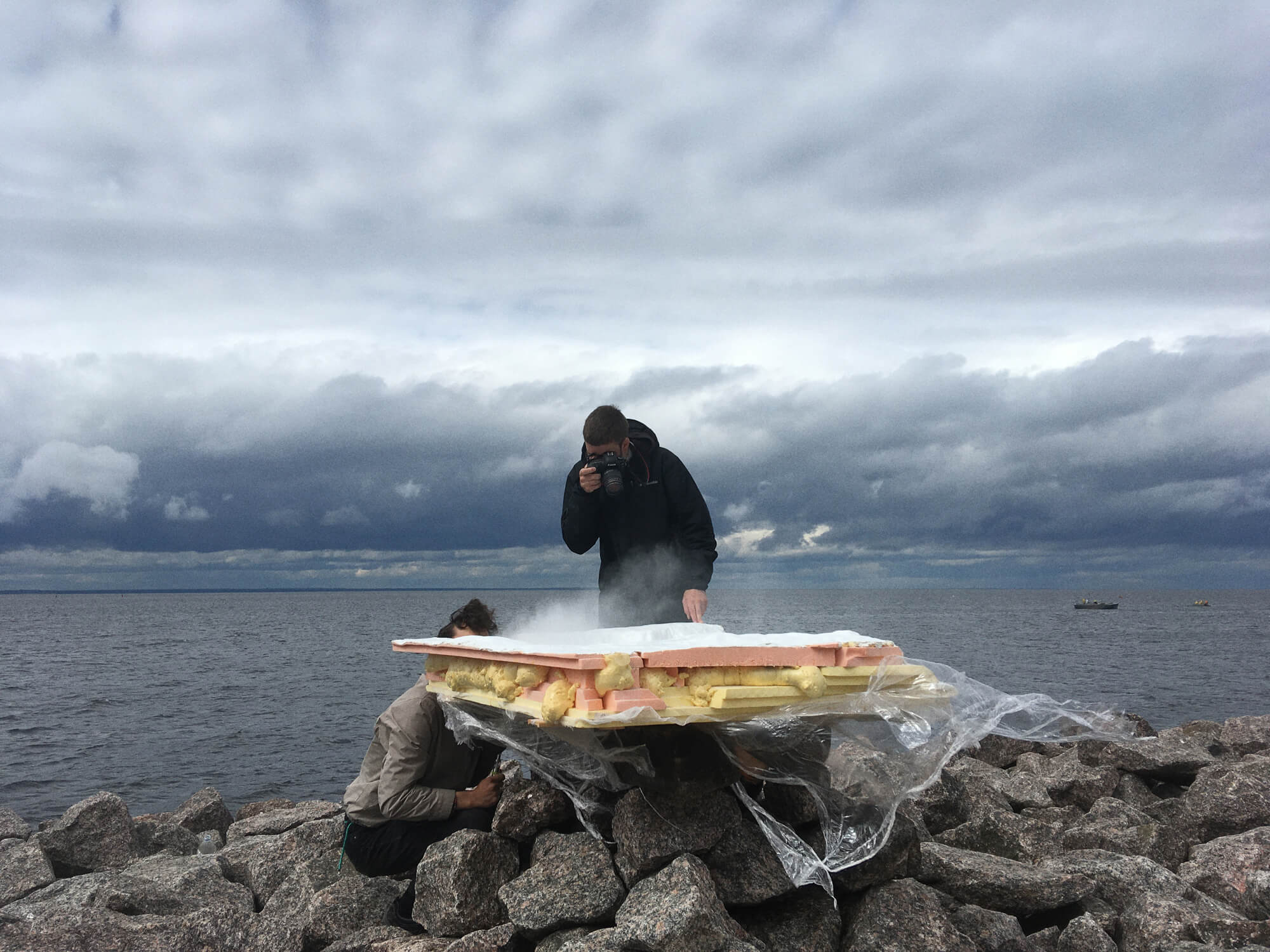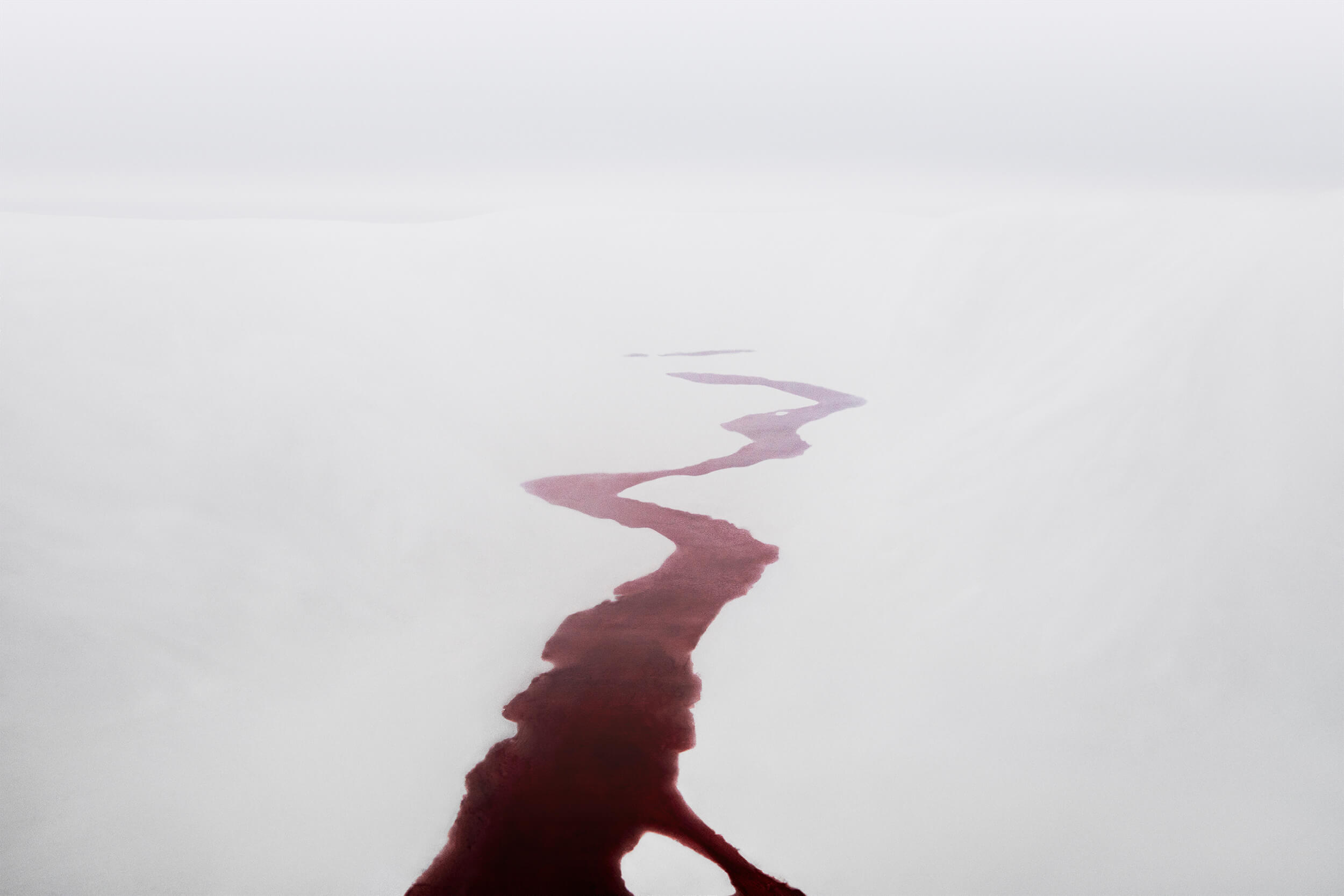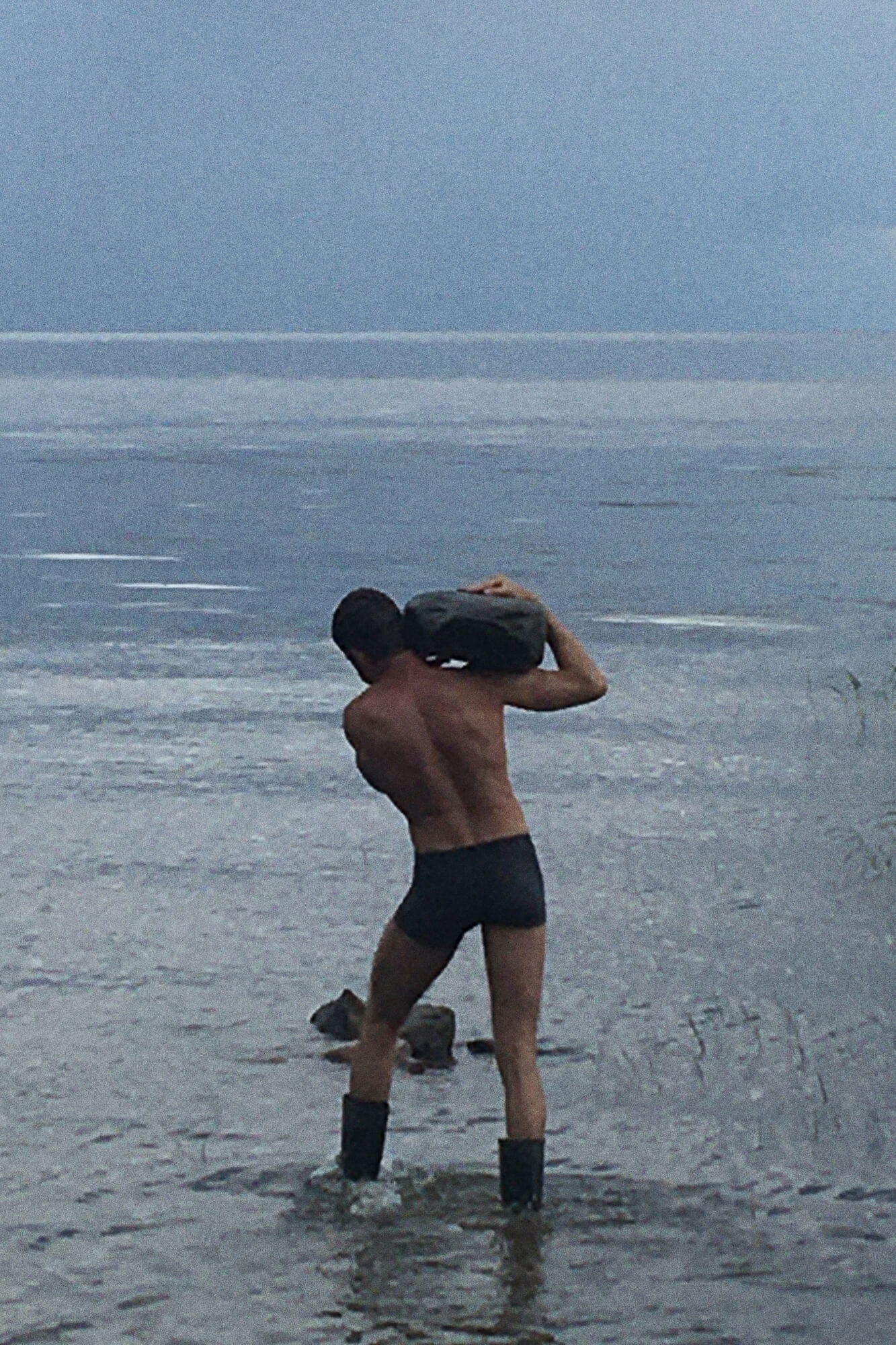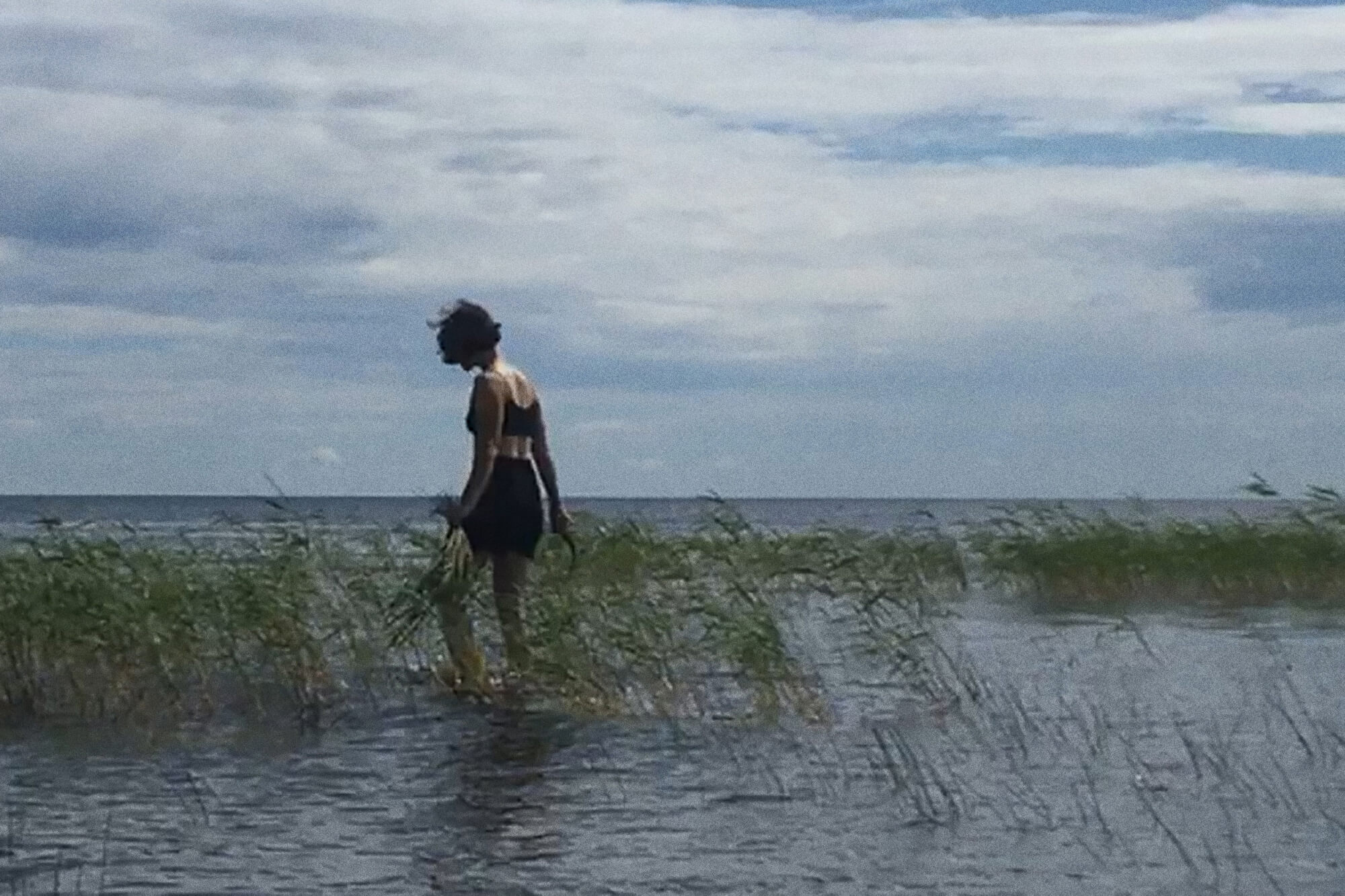
“Freeze, Deer, You Are Being Filmed”: How And Why To Spend Weeks On One Photograph
Igor Elukov’s method is close to pre-digital cinema: he shoots real objects and locations, large-scale models integrated into natural environment; he also uses pyrotechnic effects, light installations, optical illusions, and animals. His works often look like a collage: it is difficult to believe that all of this exists in reality or was explicitly created for the sake of photography.

A Russian photo- and video artist who lives and works in St. Petersburg. He studied painting and graphics at an art school and has been engaged in photography since 2012. He filmed documentary series, and he is the author of the film “Severe” about life in Russia's Far North. In 2017, he switched to staged photography.
— In 2016, there was a strange time when I came up with most of the images. I could name a dozen reasons why exactly they came into my head, but the ways of their appearance are too confusing. These images have no meaning, but there is joy in creating your own myth, your own cosmology. There is also joy in communicating with other artists, nameless, who lived several thousand years ago. These photographs reveal a conversation with them and with our native Greco-Byzantine culture. And the whole story is about exploring the connection between man, nature, and space, which is intricate, though invisible.
I live in St. Petersburg, and this city has lucky geography: in its vicinity, you can find landscapes that are very diverse in character and plasticity. In my project, the landscape is the main participant of the events.
Work on the project has been ongoing since the beginning of 2018. A lot of time has been spent looking for a landscape and a hero, creating objects, experimenting with technologies, and revising solutions. Often we had to stop shooting due to a lack of budget. On average, my team and I spend about a month on one shot, sometimes two, but there are also happy cases when we get it done in less than a week. Anyway, I love this work pace.
We consider each frame as a separate artwork with its peculiar formula. Each time we look for unique analog technology. We create a real object or performance that exists for a short time. Photography simply captures a moment in time and space. The very fact of the realness of this event is important to me. This imposes the necessary constraints on the “artist’s omnipotence,” helping to condense the essence of the vision into a concentrated form, as in the art of Japanese haiku.
The Deer
A couple of hours before the shooting, one of the deer’s antlers fell off, so we replaced this animal with a beautiful white female deer recently brought from the tundra.

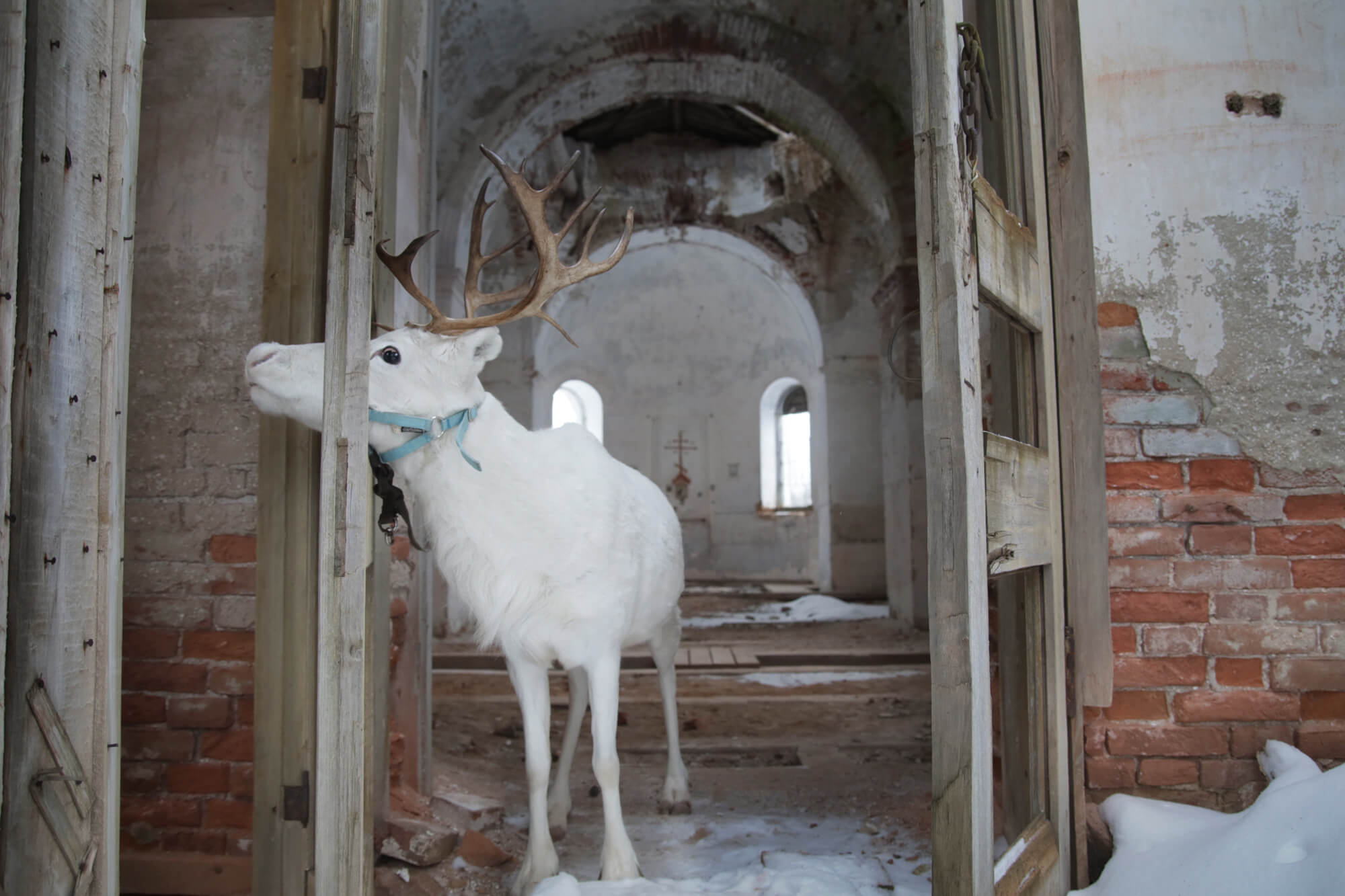
Бэкстейдж
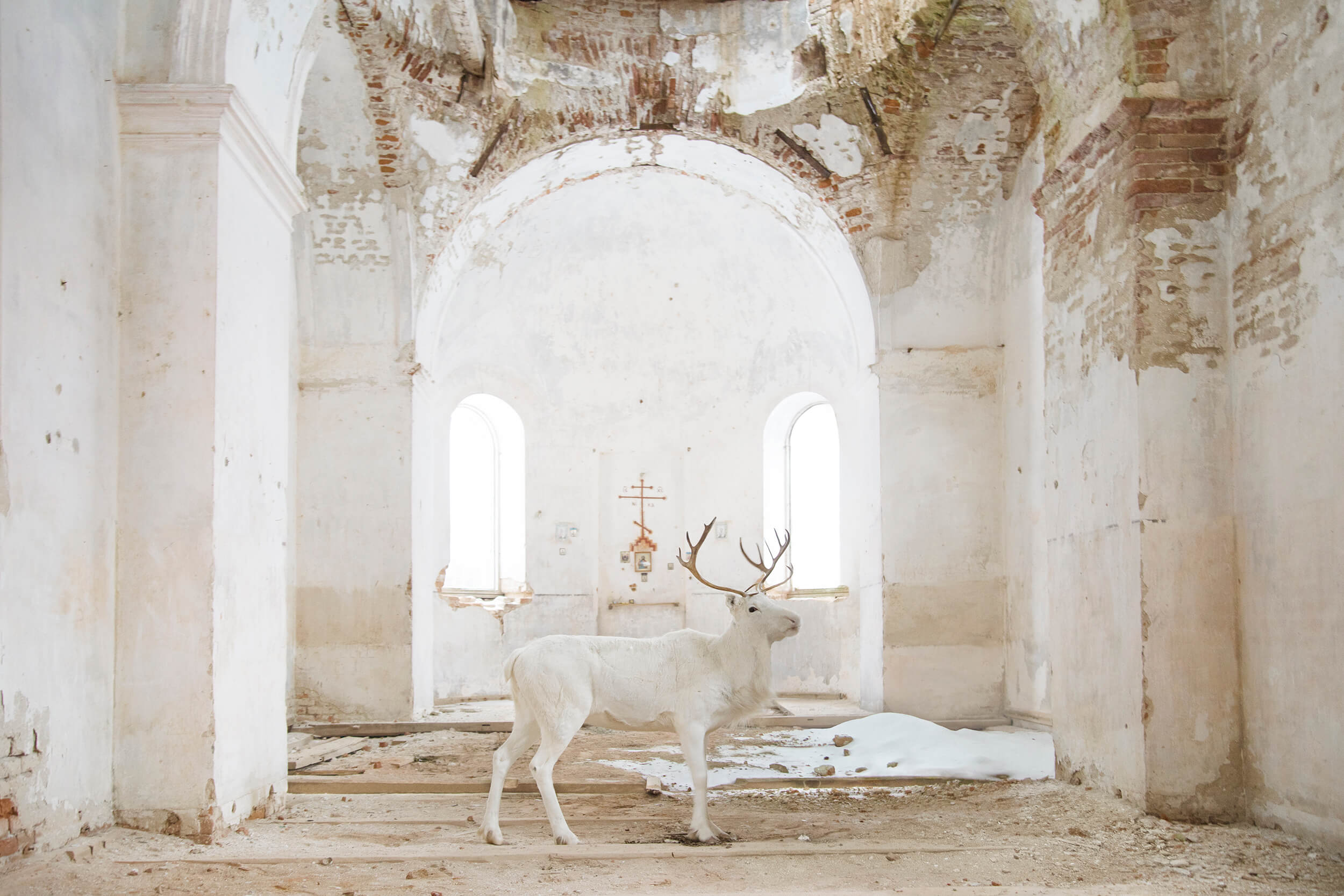
A photo from the "Book of Miracles".
I decided to implement this idea back in 2017, in the spring, but it turned out that all the deer had lost their antlers by this time. So the work had to be postponed for almost a year. The deer was supposed to be the “tuning fork” for the entire series. It seemed to me that if I could handle the deer, I could handle everything else – this idea seemed the most difficult.
I had long imagined what kind of church was needed but spent another couple of months in search. I had to go to Karelia to check a church and find an animal nearby. But even though there were deer in the neighborhood, none of them came up to us. I liked the church; we decided to shoot in it and found the deer on a farm in one of the suburbs of St. Petersburg. A couple of hours before the shooting, one of the deer’s antlers fell off, so we replaced this animal with a beautiful white female deer recently brought from the tundra. We put her in a horse van and set off 600 kilometers from St. Petersburg.
The shooting took place without any particular difficulties. We did it in less than one hour. It was about -30 ° C, for which we were not ready, but the deer behaved perfectly. Since childhood, I have dealt with animals, as I grew up in a village, so I work with them calmly. Moreover, we always cooperate with trainers or veterinarians.
The Object
The result was a 15-meter structure resembling an aircraft.


Бэкстейдж

A photo from the "Book of Miracles".
When we started shooting, there was no hope for snow, so we decided to find a landscape that resembles a tundra without snow. We chose our favorite alluvium on Vasilievsky Island. There was only one problem — this landscape is constantly changing due to the construction site, and the next day you can find the chosen place buried under a pile of sand. But everything worked out for us.
The construction took a couple of days: we made drawings, performed the calculations, and finally assembled the object from PVC sheets and enveloped it in a golden foil. The result was a 15-meter structure resembling an aircraft. We used two batteries, a dimmer, and 15 meters of the LED strip for the object to reflect the light in the right way and with the right strength. At the shooting site, we dug a ditch to hide the light. But the lighting solution turned out to be unexpected: behind our back, five hundred meters away, there were new buildings, and their illumination gave a soft and beautiful reflected light. Since the shutter speed was about 30 seconds when shooting, I illuminated different parts of the object with a flashlight.
During the whole process, two crew members were sitting behind the structure, protecting the object from the cold sea wind and looking at the stars. In the morning, we shot it with a different composition reflecting the rising sun, and then we dismantled it.
The Church
The filming was planned in one day, hoping that a miracle would happen.


Бэкстейдж
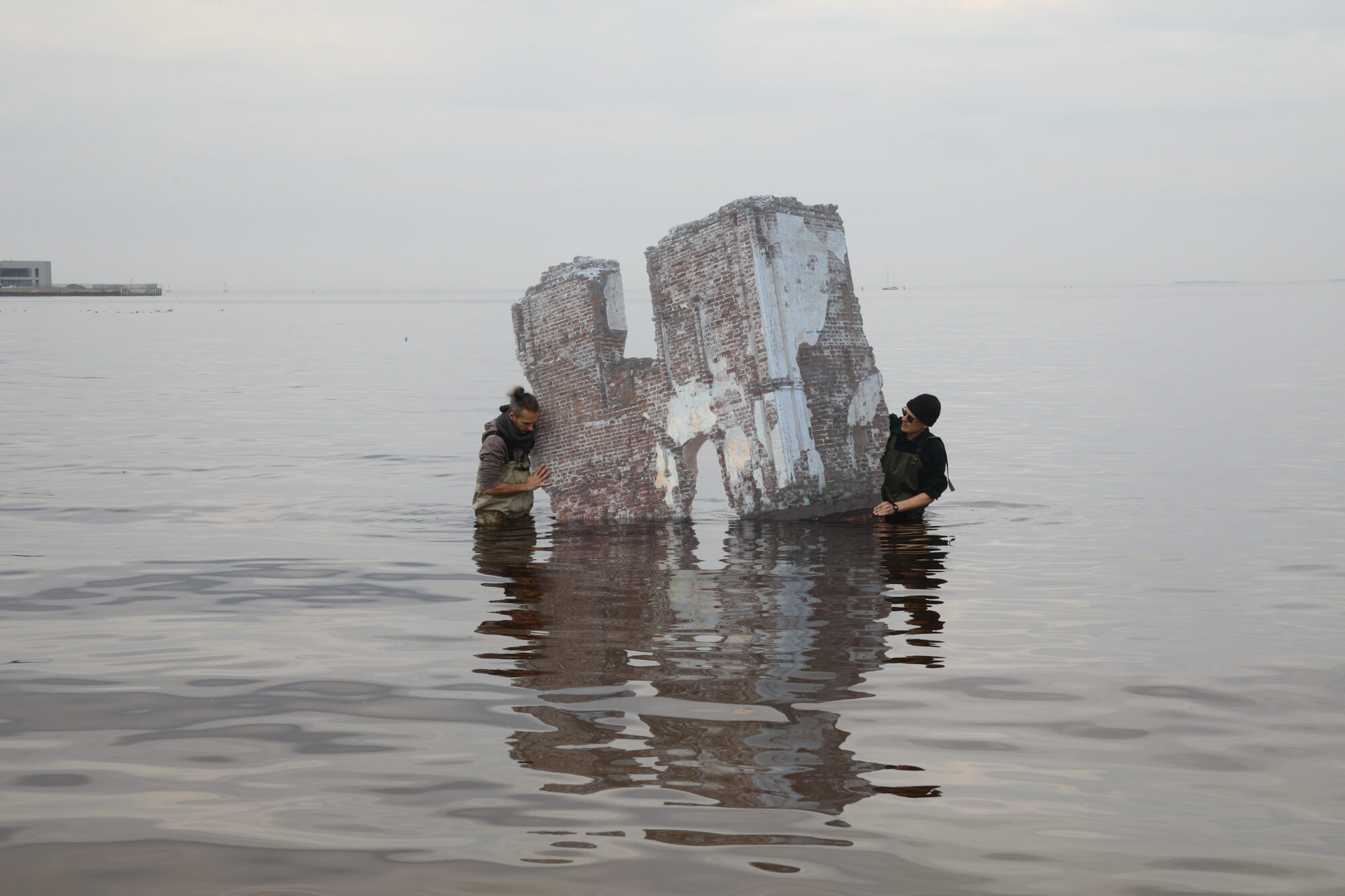
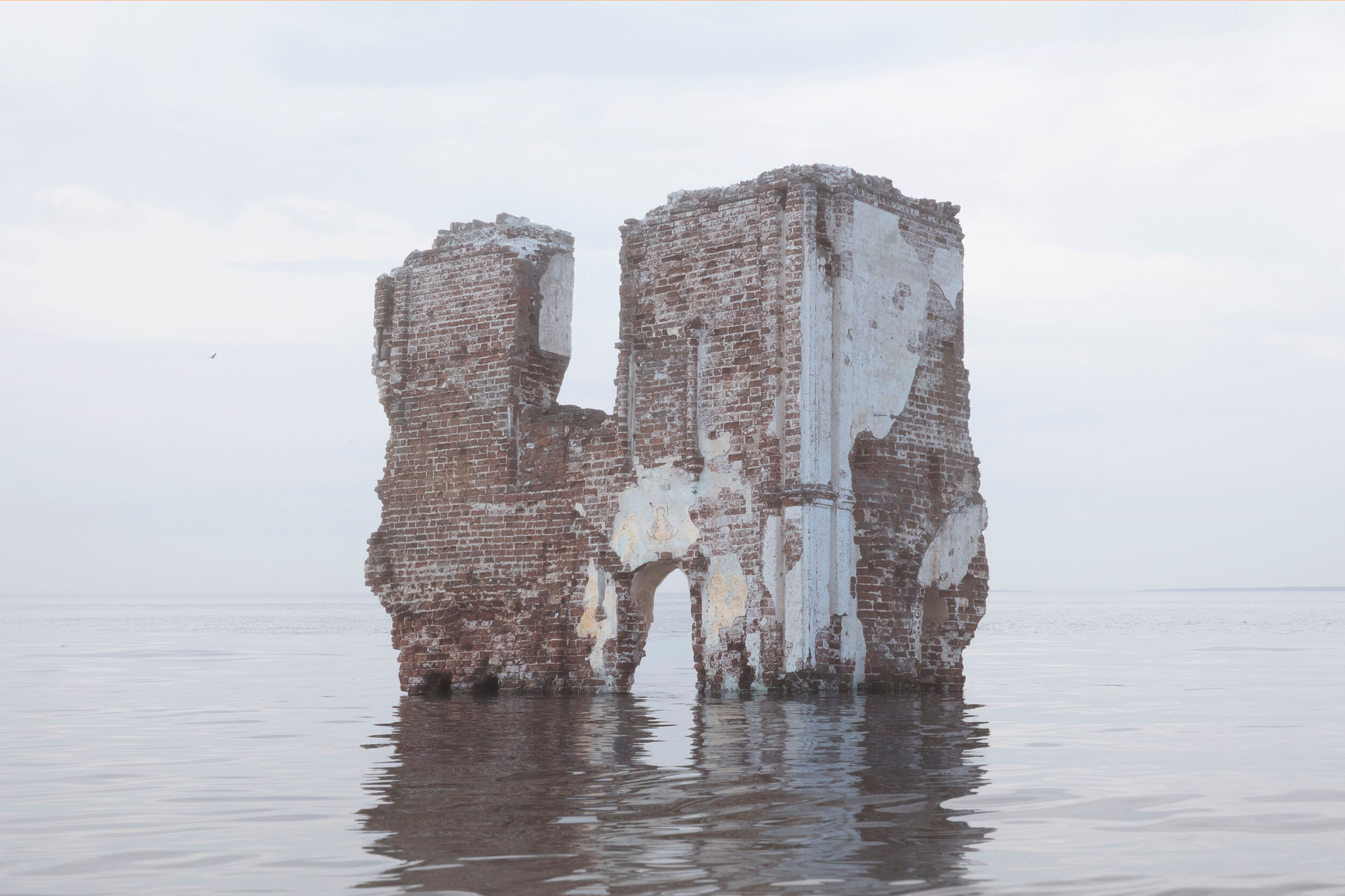
A photo from the "Book of Miracles".
Initially, we planned to shoot a Georgian church, which I saw in the photograph of Lilit Matevosyan. But it turned out that a hotel was built right opposite that church, so it would not be possible to picture it. At my request, the church was investigated by four different photographers, including one specializing in architecture and one with a drone, and I hoped that it would be at least possible to glue the whole image from pieces. But nothing came of it, and I switched to another idea – to cover some beautiful interior in soil. I began to seriously develop this option, look for technology, and negotiate locations. Suddenly, a different image appeared – a ruined, flooded church with frescoes by the ancient Russian icon painter Dionysius.
Taught by my experience with the deer, I went to look for a church on a website about Orthodox architecture, where I studied several hundred options. I chose the ruins of the temple of the Nativity of the Virgin Mary – a building dating from the middle of the 18th century on White Lake in the Vologda region.
But first, we went to the Ferapontov Monastery and photographed the unique frescoes by Dionysius. Then we got to our cathedral on the lakeshore. Having pictured it, we returned to St. Petersburg and began to prepare sketches for the paintings, using photographs from the Ferapontov Monastery. By the way, Dionysius and his two sons painted the cathedral’s almost entire inner surface in 32 days. An artwork of such quality created within such a short period is awe-inspiring to me, who takes ten photos in a year and a half.
At first, we thought to transfer the frescoes to the temple walls but settled on the church portal’s design, traditional for ancient Russian temples. Using a graphic editor, we changed the window and door openings’ shape to arched, which is typical for churches built until the 16th century. After that, we printed the church’s images on self-adhesive paper, laminated them, and glued them to the base. There were two parts of the church, two and a half meters high and about a meter wide.
The filming was planned in one day, hoping that a miracle would happen and there would be no strong wind and waves on the alluvium of Vasilievsky Island; otherwise, they would immediately break our fragile mock-up. Sun was also undesirable; it could reveal that the object was flat. We studied the terrain, measured the depth, and realized that without equipment, the assistants would not hold out in the water – at the beginning of May, it was still too cold. Therefore, we found two fishing suits that protected them from the water up to the chest. On the morning of the next day, the weather was perfect. We arrived at the bay at eight o’clock; by eleven, we assembled the mock-up, fastened it securely with a frame; by one o’clock in the afternoon, we had finished photographing. A downpour started immediately after.
The Ark
The guard endlessly changed the shooting conditions; he asked for a lawnmower or a chainsaw as a reward.



Бэкстейдж

Backstage

A photo from the "Book of Miracles".
I found the ark in a video of an anonymous stalker. I went to the place – it was an abandoned military camp – and found a hangar, where I found boats of the right size and shape. It was winter, so I waited for the snow to melt. In early summer, I tried to find an ark closer to the city to facilitate logistics. We were offered to buy a damaged boat, often filmed in war films, and a vast plastic skiff that stood on the roof of a container in the cargo port, where ships were sawed for metal. We explored the Gulf of Finland’s entire coast, marking what could potentially be bought and burned on the map. In the end, we returned to the hangar.
Even then, when leaving the hangar territory, I came across a pack of dogs and realized that the base was not completely abandoned but guarded. Then it turned out that a 60-year-old guard was living there. He was distrustful and scared. It was impossible to negotiate with him. He endlessly changed the shooting conditions; he asked for a lawnmower or a chainsaw as a reward. In the end, he agreed to money, and we promised to return the vessel to its place safe and sound, although not a single intact boat was there anymore – all were rotten long ago.
Seven people participated in the filming, plus we hired four more at the last moment when we realized that the skiff weighs about a ton. We erected a removable structure on the boat. We planned to burn only the temporary structure; we had to leave the vessel intact. We barely managed to finish the work on time to meet the right lighting conditions; everyone almost lost faith in success. As soon as they put the ark on the water, covered it with a cloth, and protected it from fire, a strong gusty wind began, which was very convenient for the filming.
When the structure burned, the guard was always nearby; that is, he sat behind the boat in the water – it was shallow there. He had two buckets with him in case he had to save the boat from the fire. The filming lasted just one minute; I asked my colleagues to do takes from different angles – it would be too difficult to repeat this. In the end, everything worked out, but we finished late and stayed overnight in that hangar with the boat.
The Horse
The horse repeatedly shook them off as if getting rid of annoying flies, and the diodes, like stars, fell under the animal’s feet.


Бэкстейдж

A photo from the "Book of Miracles".
When we were looking for a location for the first shooting with the deer, I fell in love with Lake Ladoga’s north-western stone coast. Usually, I only work with landscapes that I know from childhood. However, in the case of the Ladoga coast, there was a quick and natural connection.
We looked for a specific place using satellite images: we needed to find a small lake with a clear horizon in the background. At the same time, we were looking around for animals to be photographed. We found one such place, 12 kilometers from a barn, at the end of Sorolansaari Island. A couple of times, our guides went to explore the coast.
The photo shooting didn’t happen as planned. We had to urgently arrive at the location before the quarantine deadline of Karelia. We walked to the destination for about three hours through forest and rocks. When we came to our destination on the bay coast, we saw a beautiful seal. We started waiting for three female riders from the barn and preparing the place for horses assembling something looking like a bridge made of stones. But the descent to the location was so steep that one of the horses with the rider rolled over – fortunately, there were no serious injuries. As a result, we led the horse to the place ford; we didn’t transfer the other two horses.
Then we had to quickly dry our horse’s coat in order to attach diodes to it. During the session, the horse repeatedly shook them off as if getting rid of annoying flies, and the diodes, like stars, fell under the animal’s feet. We reattached the device to the horse three times; some diodes fell into the water, which only diversified the picture in terms of color and glow intensity. It was already dark, and we used headlamps.
When we finished and started the way back, we got lost in the dark. The horses helped us to find the right path. Then the full moon appeared, and it became easier to walk. I seriously injured my knee, and one of the team members had an allergic asthma attack, so the way home was both beautiful and challenging. The next day we managed to leave Karelia on the last train, and immediately behind us, the borders were closed.
The Lamb
For this shot, at first, I seriously thought of slaughtering a ram.
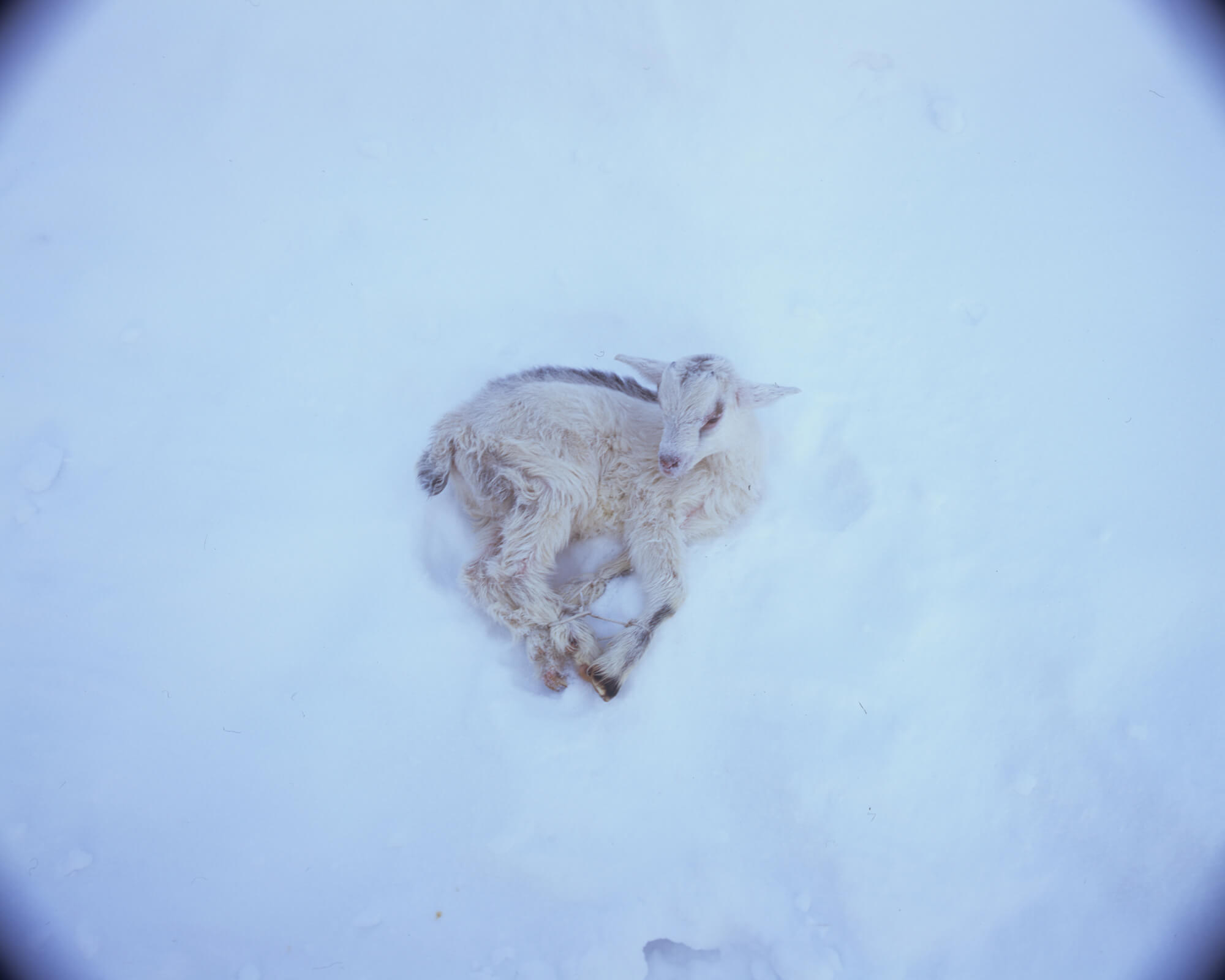

Бэкстейдж


A photo from the "Book of Miracles".
For this shot, at first, I seriously thought of slaughtering a ram – I come from a village, and the meat would come in handy anyway. We even toured several Muslim farms in search of a suitable animal. They raise one particularly beautiful breed of ram with divine-shaped horns, but all the animals were too big, and their fur was too yellow. Young lambs had not yet been born. And after all, I decided that it was not right to kill for art.
As a result, we bought by ad a beautiful goat, two weeks old. On the first day, we empathized with the animal too much, we were afraid to hurt it, and the shooting did not work out. But the second time, we arrived at the location with fierce hearts and a step ladder to get the right angle. One person laid the goat on the snow with outstretched arms, while another person supported that person from behind, creating a counterweight. In this manner, we managed to put the animal in the snow without leaving a trace. We made the liquid resembling blood ourselves – I don’t remember from what ingredients.
During the filming, I refused to use the medium format camera: in this project, it turned out to be almost impossible due to work with tricky lighting, animals, and other things. Although I originally planned to shoot with a six-by-seven-centimeter camera, I ended up working with a digital one.
Translated by Lubov Borshevsky
New and best













